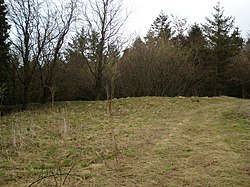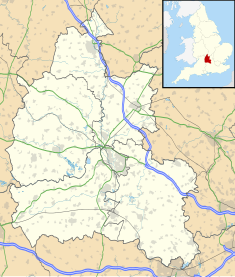This article needs additional citations for verification .(April 2018) |
| Hardwell Castle | |
|---|---|
| Hardwell Camp | |
 | |
| Type | Hillfort |
| Location | Compton Beauchamp, Oxfordshire |
| Coordinates | 51°34′42″N1°35′14″W / 51.57844°N 1.58723°W |
| Official name | Hardwell Camp promontory fort |
| Designated | 18 August 1958 |
| Reference no. | 1017820 [1] |
Hardwell Castle or Hardwell Camp is an Iron Age valley fort in the civil parish of Compton Beauchamp in Oxfordshire (previously Berkshire). [2]
